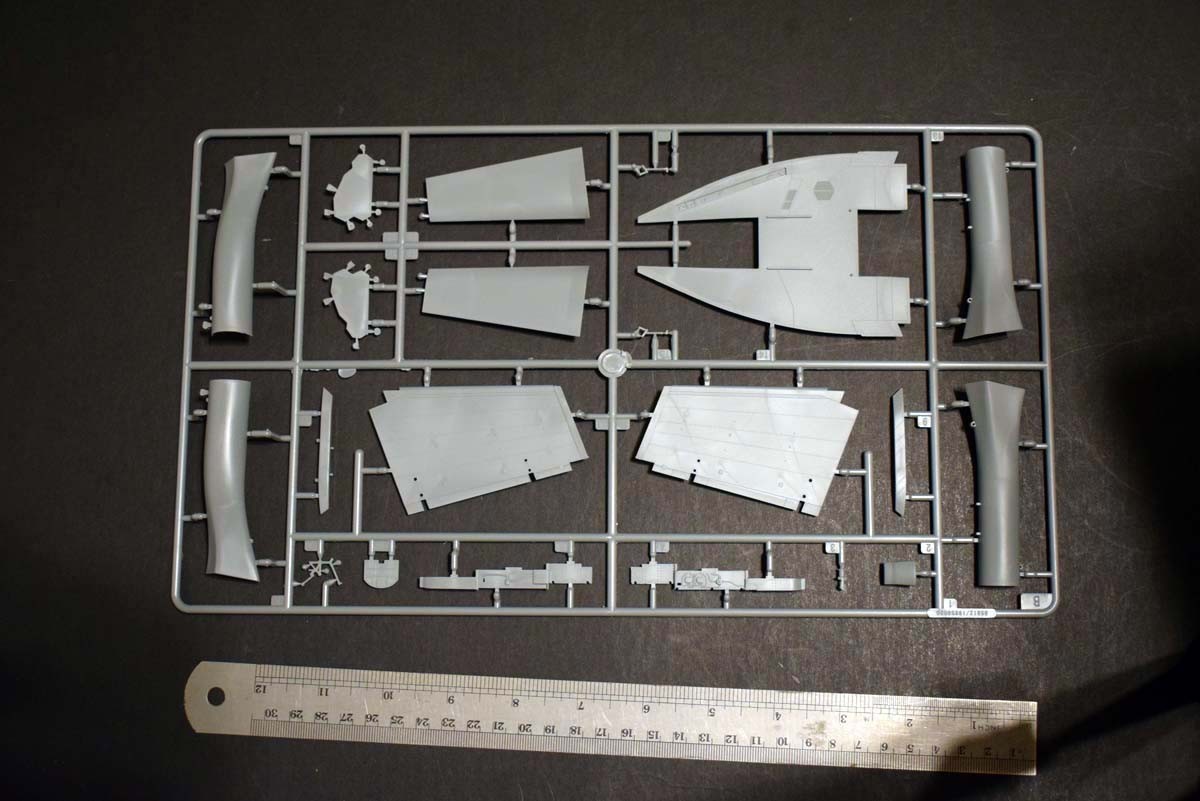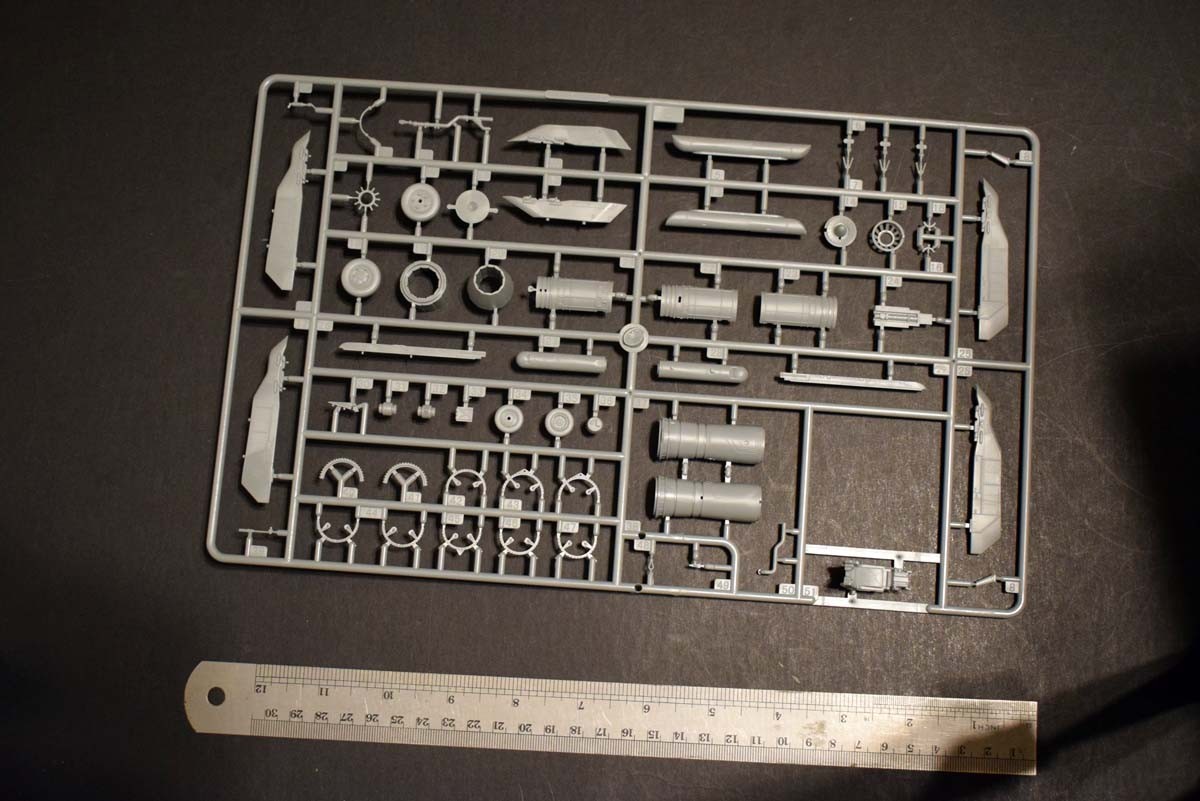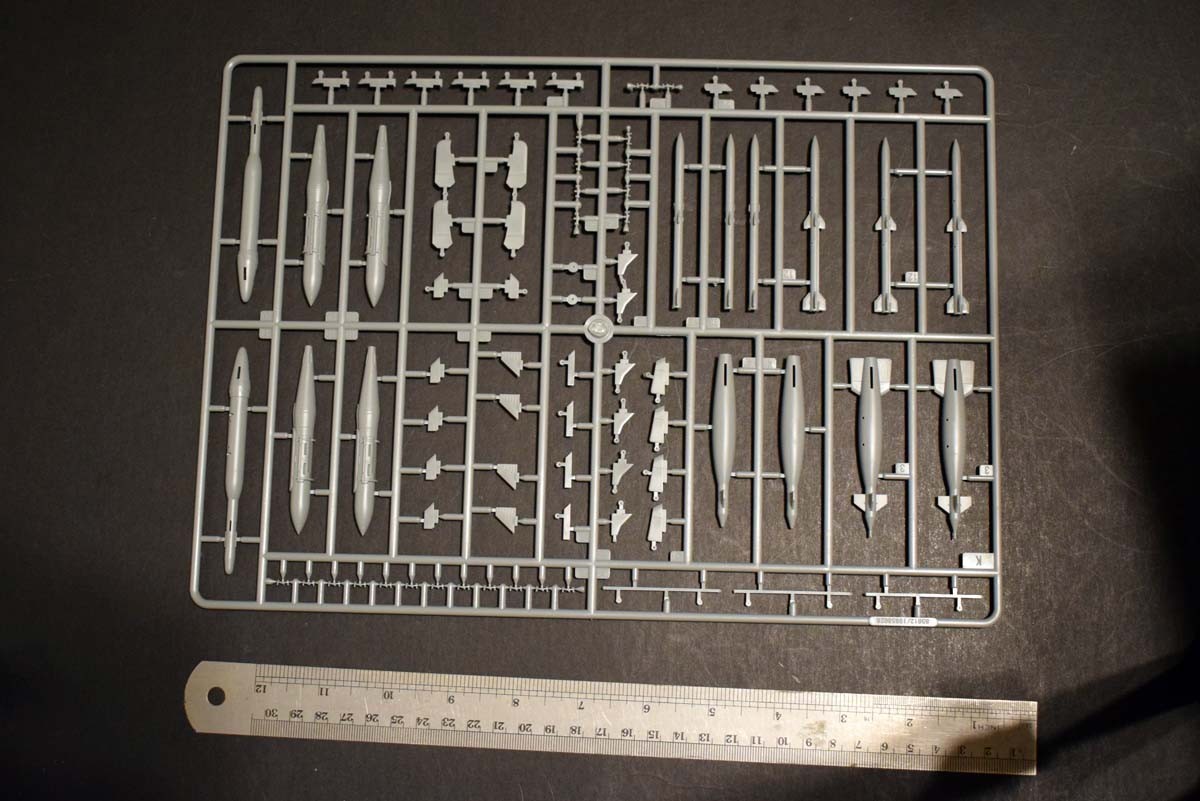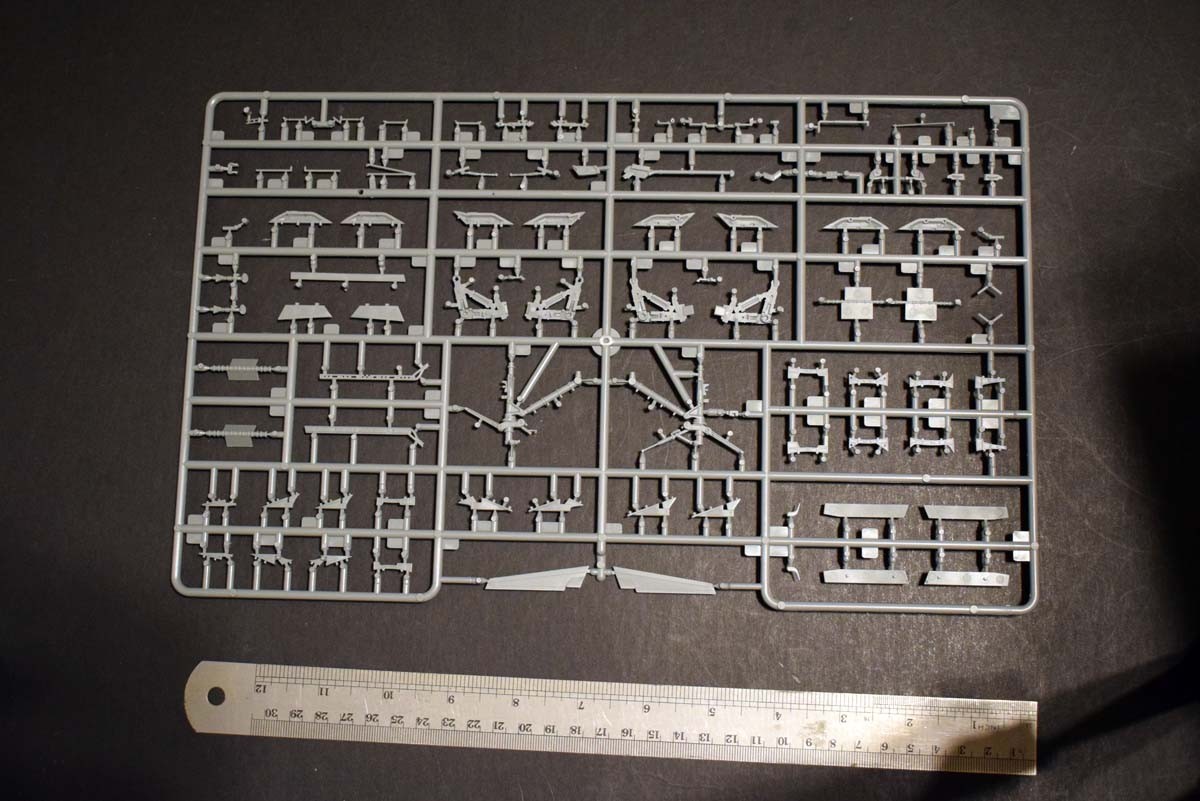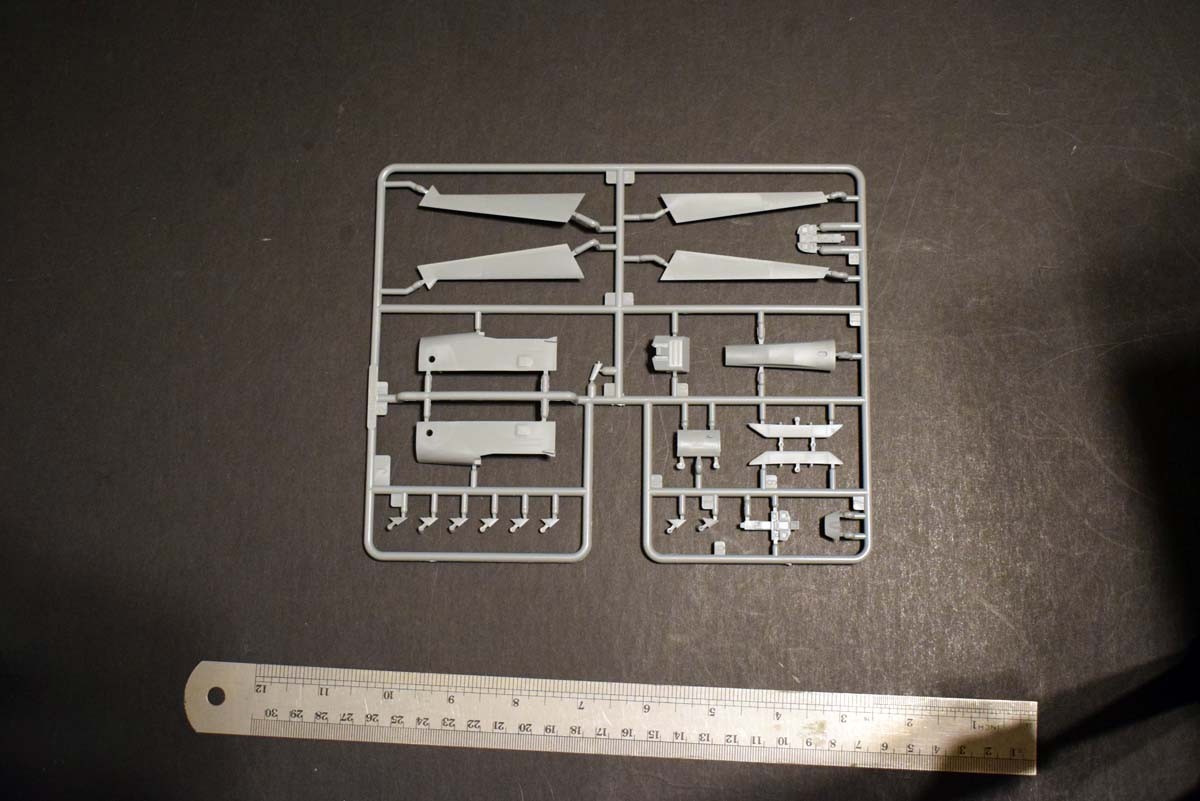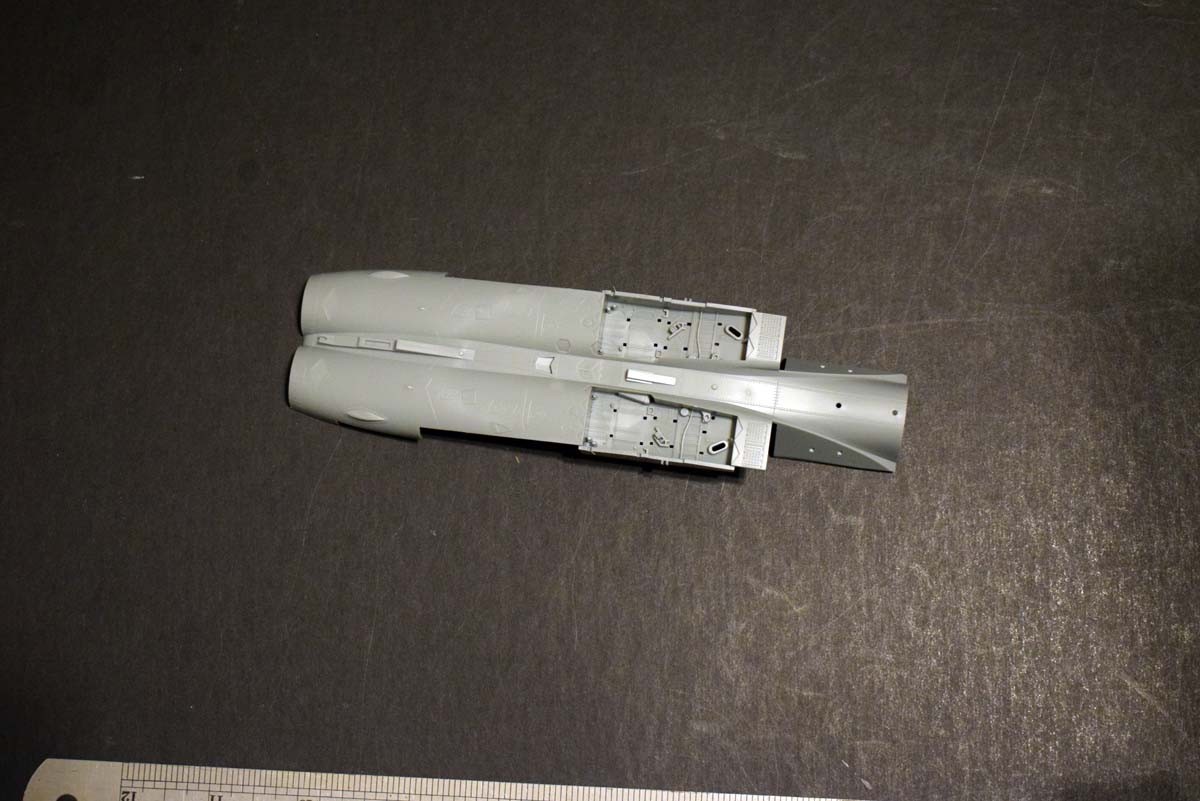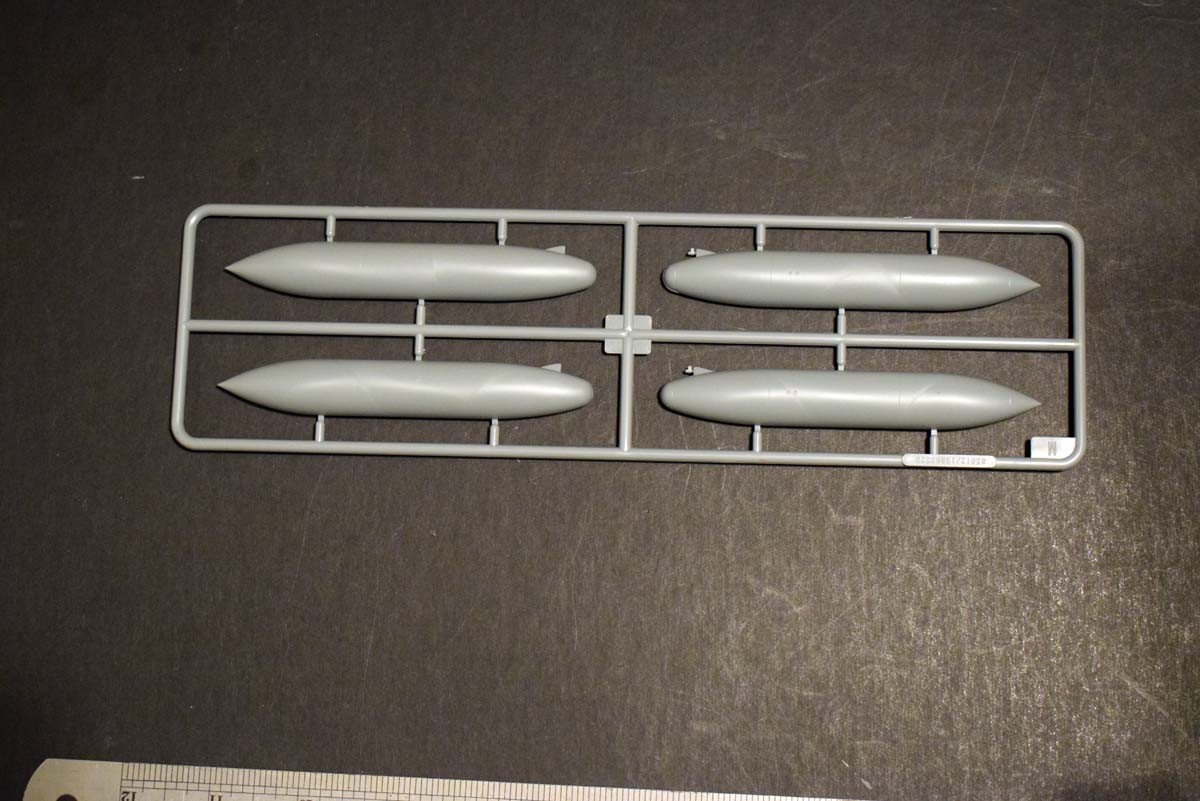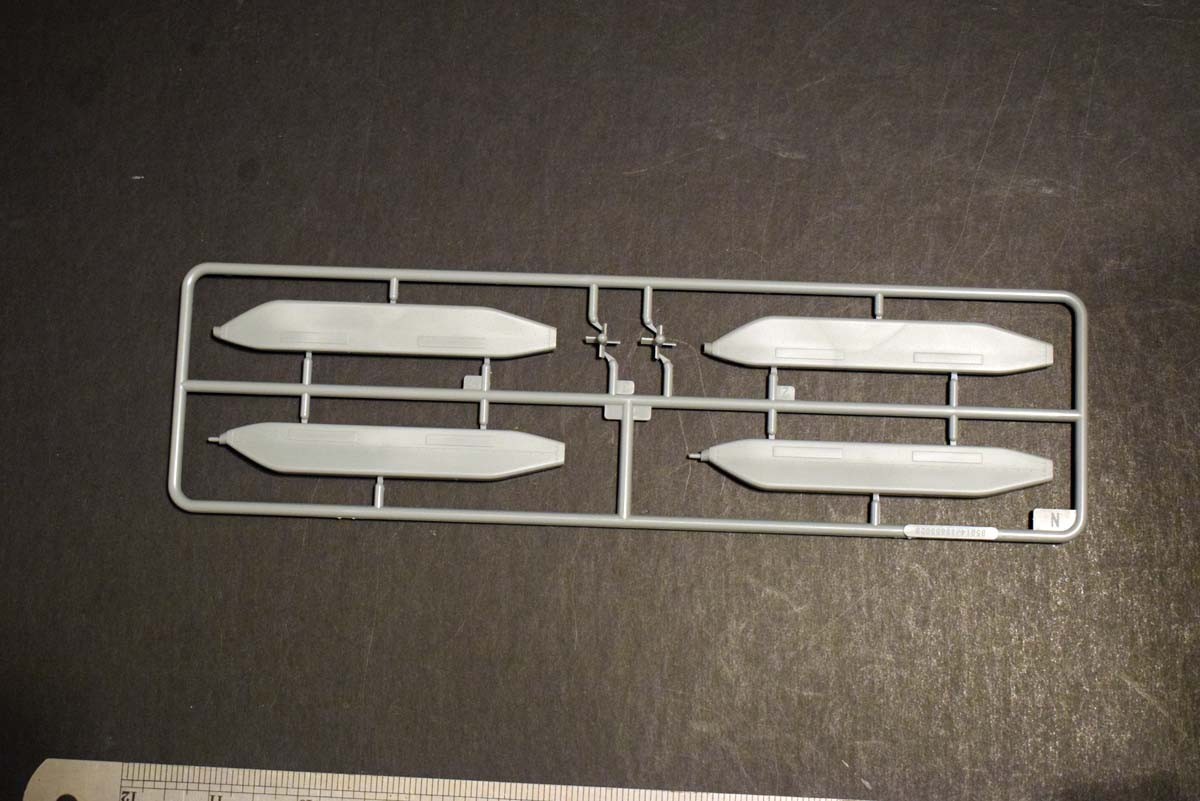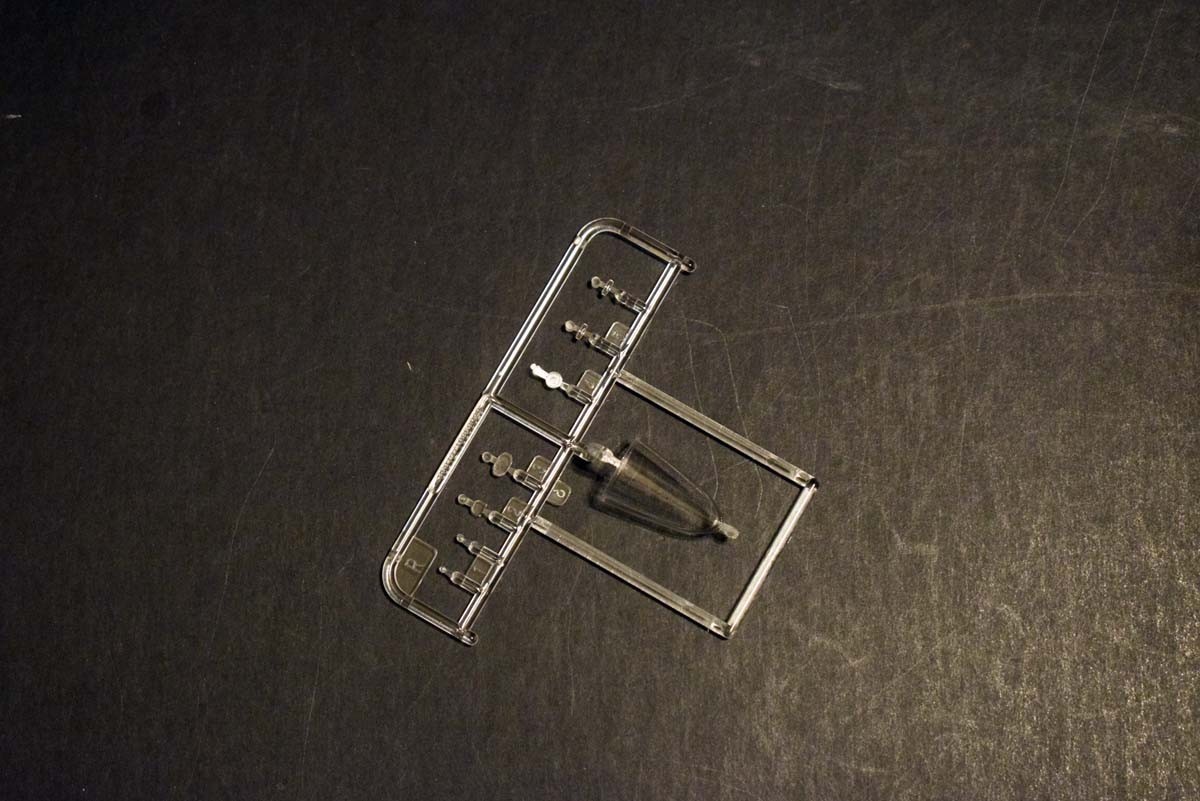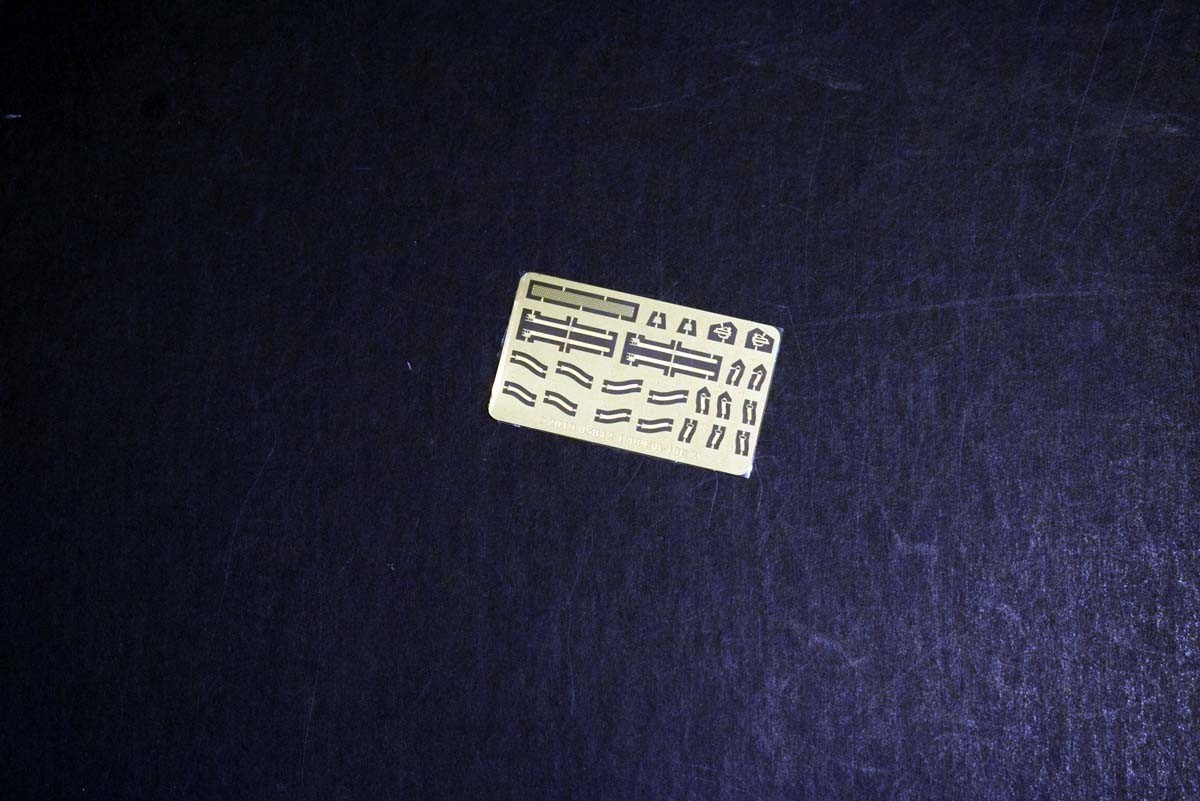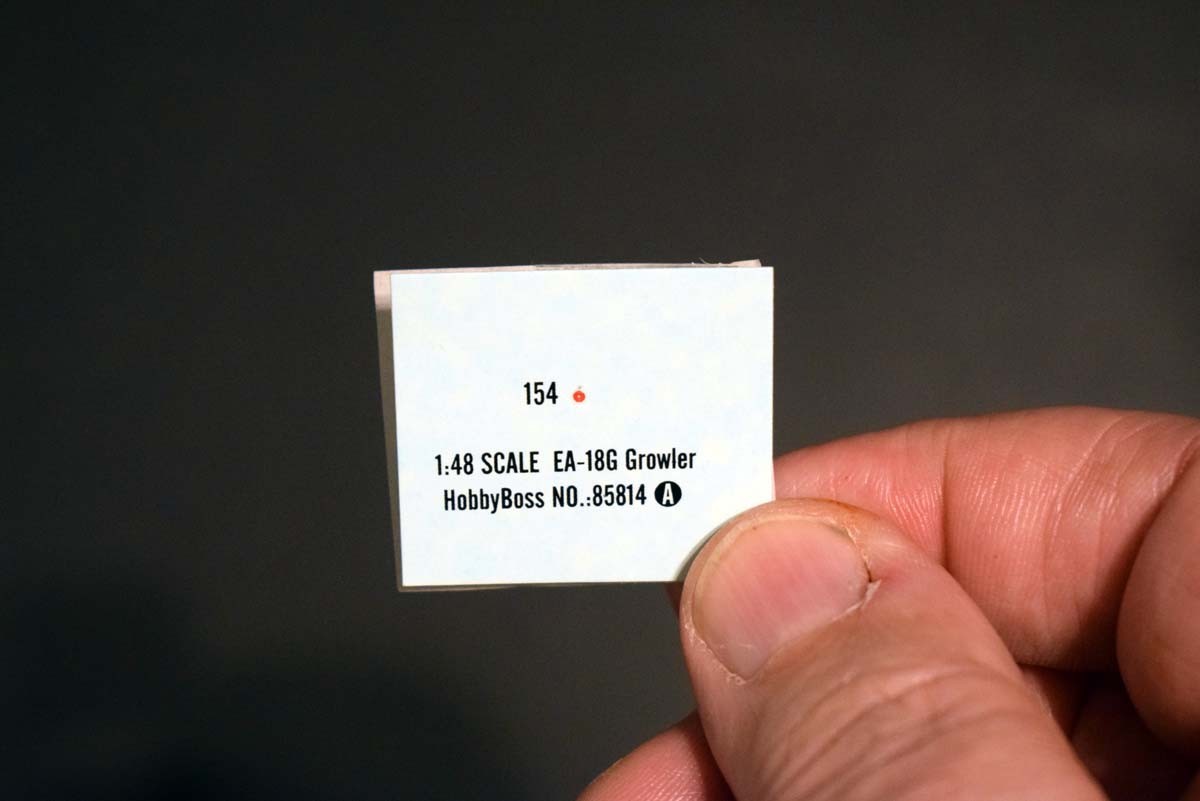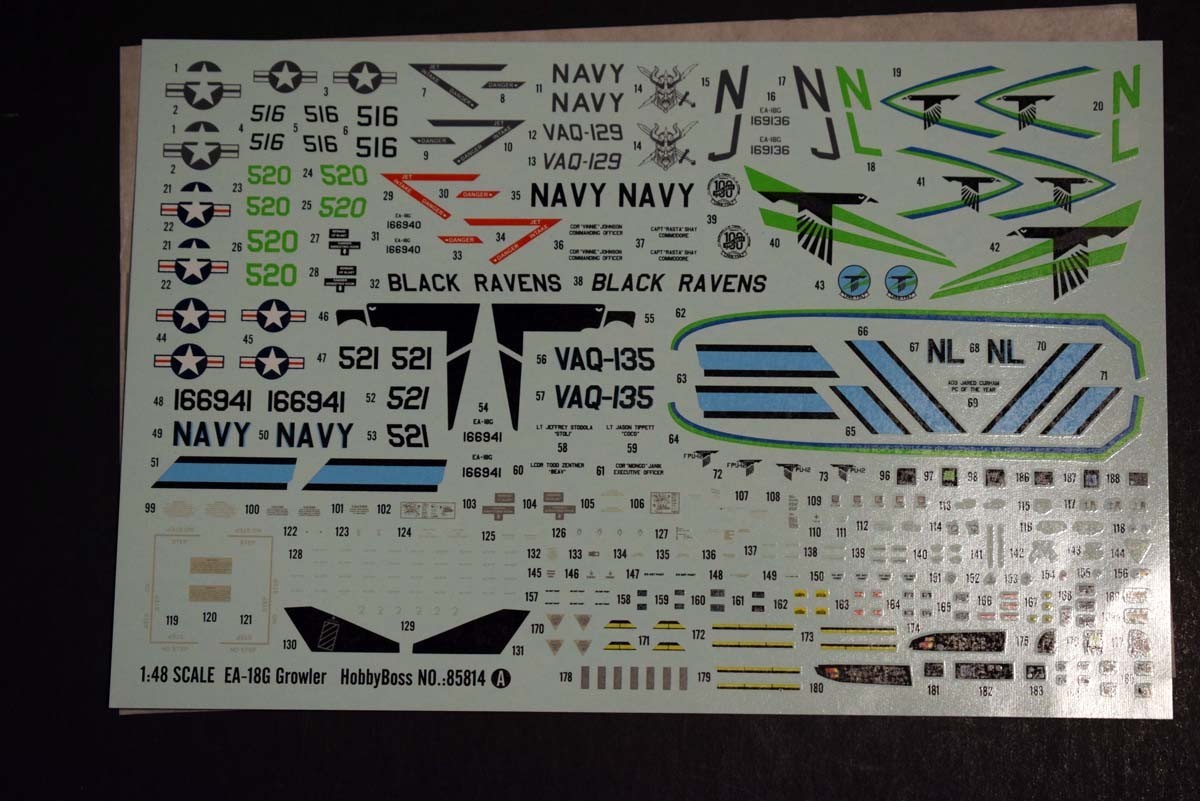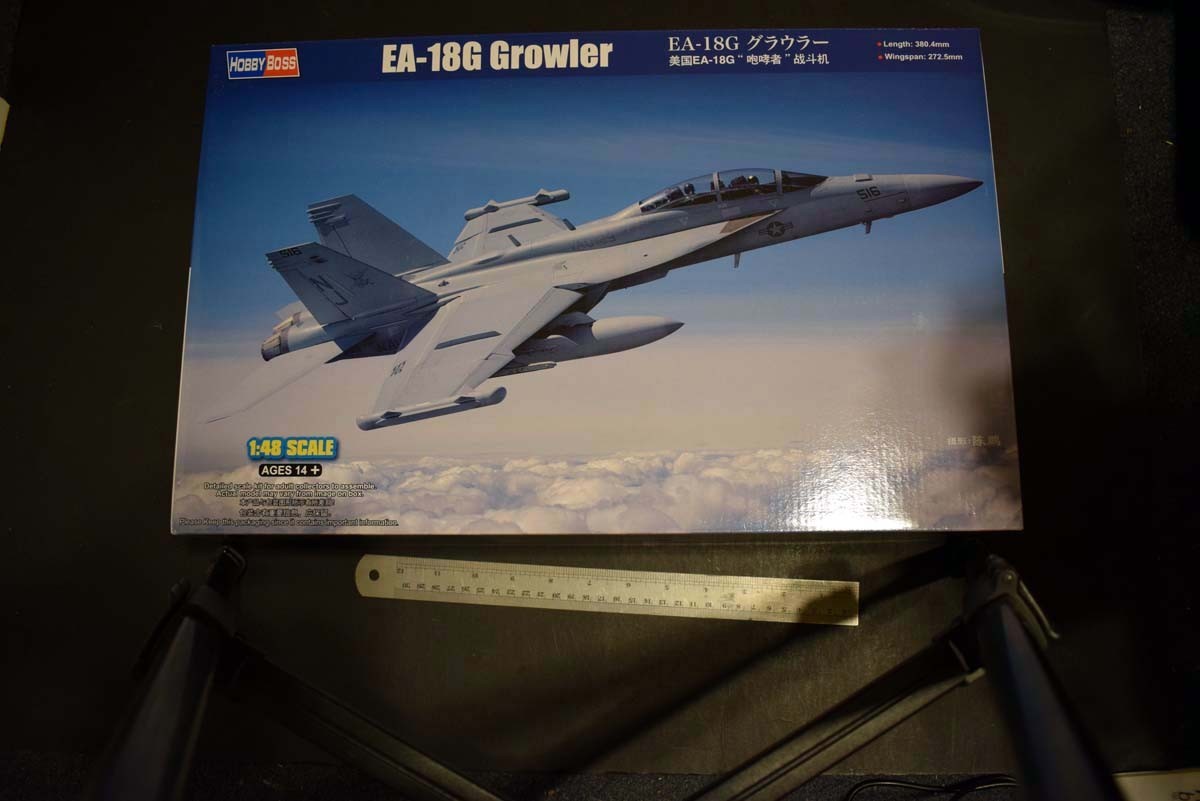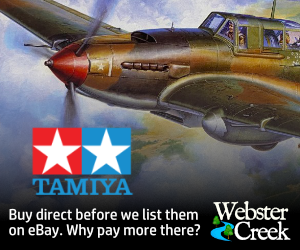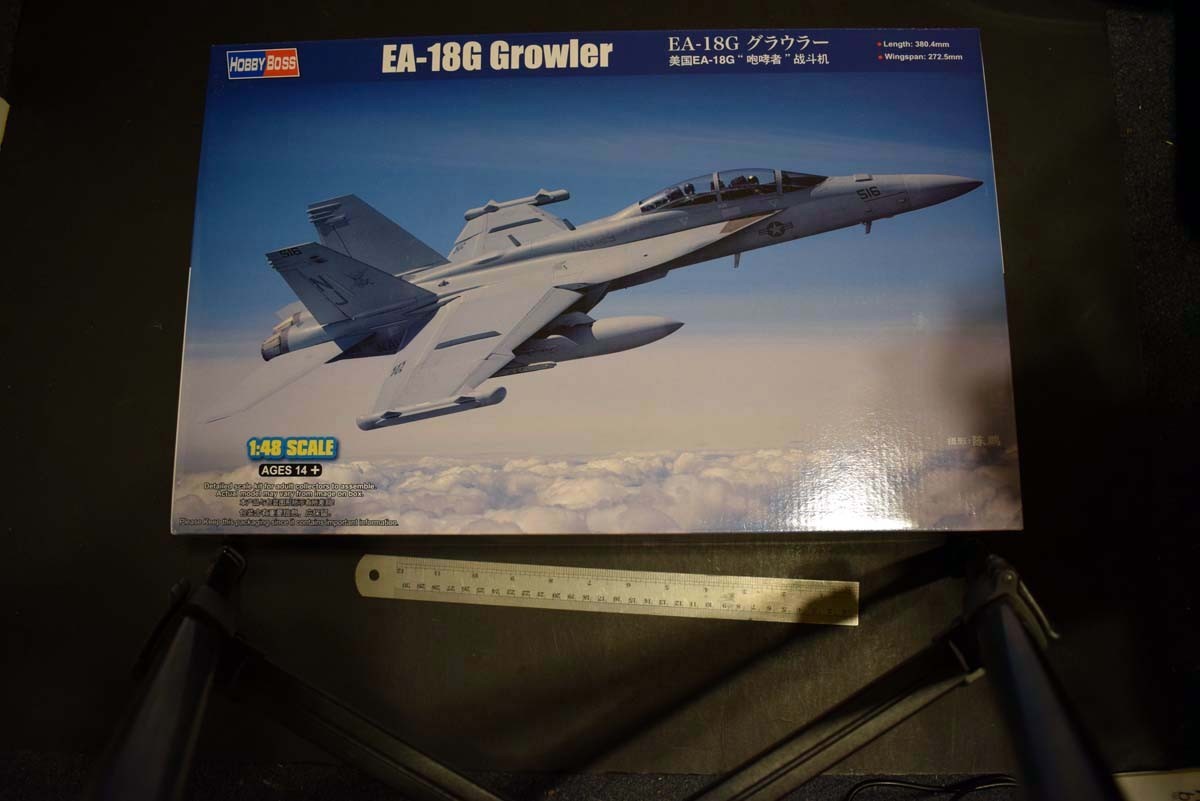
Introduction
The F18 has been the US Navy’s main fighter bomber for many years with a number of changes having taken place during its lifetime; The F and G variant of the Hornet could be said to be a new aircraft being bigger and having many new features. Hobby Boss is producing a family of Hornets it would seem with this release of the latest type. The E/A-18G Growler is the electronics warfare variant and is visually identical to the F/A 18F Super Hornet externally other than the wing tip missiles being replaced with wideband receiver pods on the EA-18 Growler and a vane on the upper surface of each wing. I believe that all of the other changes are hidden away inside the aircraft. The E/A-18G Growler is 800 Kilo’s heavier than the F/A 18F Super Hornet un-laden weight. The set up of the rear cockpit is also different, but that is not an area that is easily seen.
Review
This offering from Hobby Boss is packaged in a substantial cardboard box, with a segment of the box partitioned off and protecting photo etch, some plastic parts including the clear canopy. An examination of the mouldings reveals clean parts, with good clearance for access and reasonable sized gates between the sprue and the moulded parts. One aspect that I am not keen on, are that some of the gates are moulded onto the mating faces rather than the edges of the parts. This makes clean up problematic, as cutting the connector could leave you with a hollow, and sanding could also remove more of the mating surface than intended. The other issue could be that you do not remove enough of the gate, and so the parts may not close up as intended. This particular issue is not restricted to Hobby Boss, but it is common to them.
In order to release several different versions of the F18, Hobby Boss has gone down the route of making the fuselage out of a number of separate parts. The cockpit itself in some ways benefits the modeller, due to the access it gives after installation and means that fine detail painting could be accomplished in some cases after installation into the fuselage front. This approach gives you a solid moulding to hold on to, should you require to do any detail painting. The ejector seats have excellent detail for injection moulded plastic, and are provided with photo etch harnesses. I also like that Hobby Boss has included decals for the ejector seats, which is an aspect often over looked. However my eyes are not up to checking exactly what is written on them, and it would not be the first time that Hobby Boss has provided incorrect wording. One of the decals that I can see, the danger warning sign looks as if it spells (Danker), I do regardless compliment them on attempting to supply such small detail that would normally be available via after market items. The other decals that I have checked, appears to have the correct spelling, again despite the very small size of individual decals. The main instrument panels in front of the two pilots have been replicated using decals (the REO stations instruments do not appear to have been modified which is likely due to a lack of information) But that has not been done on the side panels and you will need to do some detail painting in these areas. However, these side wall parts are separate mouldings and so could be accessed and painted at the point you wish. Decals have been provided on the angled surfaces on each side of the pilots. From the box it is my opinion that the cockpit interior will look very good using just the parts provided in the kit, and so the aftermarket manufacturers will have to try very hard to improve on what is provided.
The wheel well for the front undercarriage is a multi part assembly, which will enable the super detailers amongst us to get good access for the addition of home made parts and for those of us that are happy for what Hobby Boss has provided, it gives good access for painting. The rear wheel wells, are again very nicely detailed, with no less than five separate cross members being added to each rear wheel well for added detail, and again this gives excellent access for painting and/or super detailing. The wheel struts on carrier borne aircraft, have to be very strong to take the impact on landing and catching the wire. The way that Hobby Boss has tackled the complicated structure of the rear wheel struts, is novel in that the legs are in two halves and so avoiding the need for multiple mouldings that can be a real pain to assemble, can be easily damaged or assembled in the incorrect angles for accurate depiction. There are a number of very finely moulded parts that need to be added, but these only require a steady hand, and a good set or eyes or magnification. The front wheel strut is again very well moulded, with the complex structure tackled in a user friendly manner, with few parts and the mount for launching the aircraft can be placed as if in the chock for launch, or lifted in storage. My only real complaint here is that the wheels are provided in two halves but due to the tread being a circular pattern around the wheel, I am reasonably confident that the join will be hidden without the need for sanding.
An area that many modellers seem to be concerned about is the depth of the in-takes and the depth of the exhaust. Unusually for a jet aircraft in this scale, Hobby Boss has provided reasonably well detailed engines from front to rear, with the only real issue being how you could display this detail within the model in an accurate manner. I will say that the way that the fuselage has been tackled, does give the modeller good access for cutting open access panels, if showing the engines is something that appeals. Moving back to the front of the aircraft, Hobby Boss has provided a reasonably detailed radar assembly, which can be displayed by using the parts provided for a hinged open nose. The exhausts have the option of closed or flared and that is another nice option.
The fuselage itself with the wings is made up of 15 separate pieces and that does not include flight control surfaces, both front and rear. Or the fact that the wing tips have been provided with the option of being folded or deployed. Panels lines are very nicely recessed scale wise, and I particularly enjoyed seeing that the vents on the top of the fuselage between the tail uprights, have been accurately moulded which is something the Revell never managed in 1/32nd scale. The canopy of the model can be displayed open or closed, and I commend Hobby Boss for not having a seam line running down the entire length of the fuselage, which is something that many companies do on the modern US jets. That meaning that you normally have to sand and polish this seam line out, as such very well done. Missing from the cockpit canopy are the rear view mirrors, which I believe from my reference should be present.
As I stated previously both the front and rear control flaps of the main wing can be assembled in the position you prefer, this is also true for the vertical tail control surfaces with the horizontal tail surfaces pivoting from the centre point. As such it is entirely up to you, if you show them in a neutral position, or positioned for manoeuvring, landing or taking off. Also provided, something that would normally be an aftermarket product, is the crew access ladder with the sides, rungs and brace all being separate pieces.
Moving on to the weapons of war and fuel pods, we have been spoilt by Hobby Boss with a great selection of weapons. We have
Fuel drop tanks
AGM-88
AN/ALQ-99
AIM-120 D
ALQ-218
We are provided with the standard fuel tanks seen on Naval and Air force aircraft. Hobby Boss has also provided a tactical layout for which weapons would go on to which pylon on the aircraft, and what the typical mix would be. You have four weapons stations located on each wing, three are inboard and then you have the one on the end of the wing for the ALQ-218 in this case and a centre line mount. I am also pleased to see that decals have been provided for the weapons, with the proviso that I am not sure about the spelling. Hobby Boss has provided six finishing options for this model, and these are as follows:
VAQ-129 No.169136
VAQ-135 No.166941 NAS Whidbey Island 2011
VAQ-135 No.166940 NAS Whidbey Island 2011
VAQ-130 “Zappers” No.168268 USS Harry S Truman 2016
VAQ-141 “Shadow Hawks” No.166928 USS George H W Bush 2010
VAQ-132 “Scorpions” No.166894 2010
Conclusion
This offering from Hobby Boss is another beautifully designed model so far as I can see, with a lot of thought having gone into making the modeller’s job as easy as possible, when building from the box. There are no great differences between the latest two Hornets from Hobby Boss; the changes here are restricted to ordnance, and blades on the top of the wing. I am not going to comment on dimensions of the aircraft, as there are a number of sizes provided from various reference sources. Detail overall would appear to be visually accurate, but every modellers opinion varies on models depending on what access and reference they have. I really like this and the other offering from Hobby Boss, but the differences are small with most not even likely to notice. The electronics warfare version here does have far fewer options as regards ordnance and so you need to decide what holds the appeal for you.

